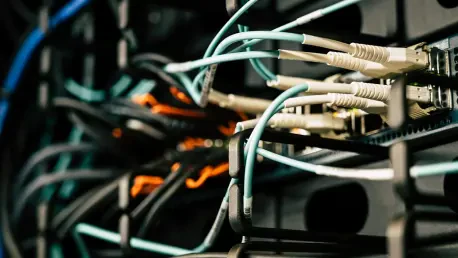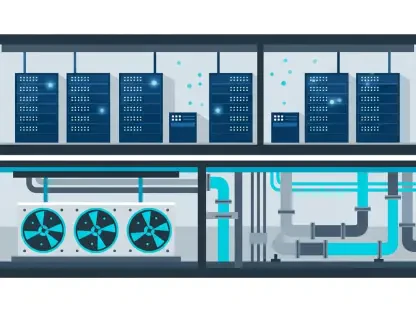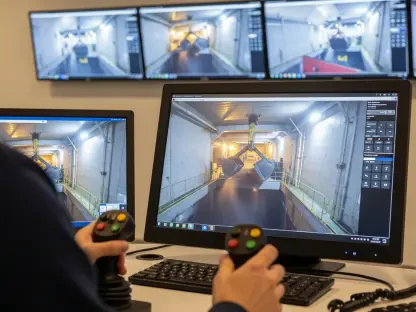In a state where vast rural landscapes often mean limited connectivity, Arkansas stands at a pivotal moment with a $308 million proposal aimed at transforming internet access for nearly 79,000 underserved homes and businesses across its regions. This ambitious plan, spearheaded by the Arkansas State Broadband Office, taps into the federal Broadband Equity, Access, and Deployment (BEAD) Program, which has allocated a historic $1 billion to the state for high-speed internet expansion. Targeting rural and lower-income areas, the initiative seeks to address long-standing inequities in digital access. With public input being sought until late August and a federal submission deadline looming in early September, the proposal could pave the way for construction as soon as the first half of next year if approvals are secured by December. This effort is not just about laying cables or launching satellites; it’s about connecting communities to opportunities in education, healthcare, and economic growth that have long been out of reach due to the digital divide.
Tackling Connectivity Challenges
Expanding Infrastructure Across Diverse Regions
The heart of Arkansas’s broadband proposal lies in its commitment to deploy high-capacity internet to underserved areas, with a significant emphasis on fiber optic technology for 76% of targeted locations. Renowned for speeds over 100 times faster than traditional dial-up, end-to-end fiber connections promise unparalleled reliability and performance. Hometown Internet, LLC, based in Berryville, has secured the largest funding share at $88.45 million to drive this transformative infrastructure forward. This focus on fiber is a deliberate move to ensure that the majority of residents and businesses gain access to top-tier internet services, positioning them to compete in a digital economy. However, the plan also acknowledges the geographic and financial challenges of reaching every corner of the state, balancing advanced solutions with practical alternatives to achieve comprehensive coverage across varied terrains.
Adapting to Alternative Technologies
While fiber optics dominate the plan, not all regions will benefit from this gold standard of connectivity. Approximately 16% of underserved locations, primarily in Western and Central Arkansas, are slated for low-earth orbit satellite services through partnerships with major players like SpaceX and Amazon’s Project Kuiper, backed by a combined $10.2 million in funding. Additionally, certain eastern areas will rely on licensed fixed wireless technology, which, while more accessible in remote zones, offers slower speeds and less reliability compared to fiber. This mix of technologies reflects a strategic compromise, aiming to cover every eligible location despite budget constraints and logistical hurdles. Critics, however, caution that satellite and wireless options may lead to higher costs and inconsistent service for end users, raising questions about long-term equity in access as the state navigates these diverse solutions.
Balancing Cost and Quality
Navigating Federal Policy Shifts
Recent federal revisions to the BEAD program have reshaped Arkansas’s broadband strategy, necessitating a complete overhaul of the initial plan and bidding process to prioritize cost efficiency. These changes, implemented earlier this year, removed the previous preference for fiber internet, allowing for cheaper alternatives like satellite services. As a result, the state has achieved significant savings of about $276.9 million, bringing the average cost per eligible location down to $3,899—a reduction of roughly $3,000 per site from earlier projections. State Broadband Office Director Glen Howie has hailed this market-driven approach as a success, emphasizing the commitment of providers to cover all underserved areas. Yet, experts like Drew Garner from the Benton Institute for Broadband & Society warn that while these savings benefit providers, they could translate into higher expenses and less dependable service for consumers in the long run.
Addressing Future Funding Uncertainties
Beyond the current $308 million allocation, uncertainty looms over the remaining $700 million of Arkansas’s BEAD funds, leaving the full scope of digital equity efforts in question. Original guidelines permitted unused funds to support additional initiatives, such as providing computers to residents, but federal guidance on their utilization remains pending. This ambiguity poses challenges for planning comprehensive broadband expansion and addressing broader connectivity needs. State officials are keenly aware of the importance of these resources in sustaining momentum toward universal access, particularly in enhancing digital literacy and affordability programs. As the public comment period shapes the final proposal, the resolution of these funding questions will be critical to maximizing the impact of this historic investment and ensuring that no community is left behind in the digital age.
Reflecting on a Digital Milestone
Looking back, Arkansas’s $308 million broadband proposal marked a significant chapter in the state’s journey toward digital inclusion, blending advanced fiber optic solutions with satellite and wireless technologies to reach nearly 79,000 underserved locations. The initiative achieved impressive cost savings and universal coverage goals through strategic adaptations to federal policy shifts. Public input played a vital role in refining the plan before its submission, ensuring that diverse voices shaped the outcome. Moving forward, the focus must shift to monitoring the effectiveness of varying technologies and advocating for equitable service quality, especially in areas reliant on satellite connections. Additionally, securing clarity on the remaining $700 million in BEAD funds will be essential to sustain progress, potentially funding programs that enhance digital access and skills. This effort laid a foundation for a connected future, but ongoing vigilance and investment are necessary to truly close the digital divide.









